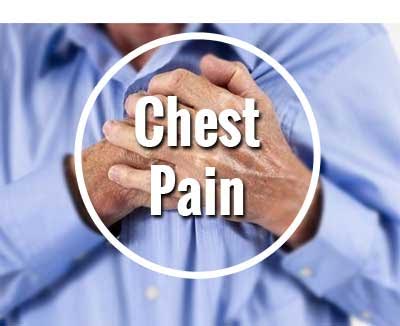- Home
- Editorial
- News
- Practice Guidelines
- Anesthesiology Guidelines
- Cancer Guidelines
- Cardiac Sciences Guidelines
- Critical Care Guidelines
- Dentistry Guidelines
- Dermatology Guidelines
- Diabetes and Endo Guidelines
- Diagnostics Guidelines
- ENT Guidelines
- Featured Practice Guidelines
- Gastroenterology Guidelines
- Geriatrics Guidelines
- Medicine Guidelines
- Nephrology Guidelines
- Neurosciences Guidelines
- Obs and Gynae Guidelines
- Ophthalmology Guidelines
- Orthopaedics Guidelines
- Paediatrics Guidelines
- Psychiatry Guidelines
- Pulmonology Guidelines
- Radiology Guidelines
- Surgery Guidelines
- Urology Guidelines
HEART score to risk stratify patients with chest pain is safe but underutilized in the ED

It is safe for physicians to use the HEART (History, ECG, Age, Risk factors, and initial Troponin) score to make decisions about admission, observation, or discharge in patients presenting to the emergency department (ED) with chest pain. However, hesitance to refrain from admitting and testing patients with low scores could explain its small effect on health care costs seen in this analysis. The study is published in Annals of Internal Medicine.
About 80 percent of patients with chest pain have an underlying condition that is non cardiac and not life threatening and, therefore, could be managed further in an outpatient setting. However, Western medicine is conservative and two-thirds of patients are admitted and receive additional testing. This puts a large burden on the health care system. Utilizing a risk-stratification tool, like the HEART score, could reduce this burden but its safety in daily practice has not yet been determined.
To measure the effect of utilizing the HEART score in daily practice, researchers at University Medical Center in Utrecht, the Netherlands studied outcomes on unselected patients with chest pain presenting at EDs in 9 Dutch hospitals in 2013 and 2014. The researchers utilized a stepped-wedge, cluster randomized trial design, which involves a sequential but random roll out of an intervention over multiple time periods. A total of 3,648 patients were included in the analysis (1,827 patients received usual care and 1,821 received HEART care). All hospitals started with usual care and then every 6 weeks one hospital was randomly assigned to switch to HEART care.
At 6 weeks, the proportion of patients with major adverse cardiac events was 1.3 percent lower in the HEART care group than in usual care (after correction for potential confounders and clustered data). The 1-sided upper confidence limit was +2.0%, not exceeding the pre-specified margin of non-inferiority. There were no statistically significant differences seen in early discharge, readmissions, recurrent emergency department visits, outpatient visits, or visits to general practitioners. Use of health care resources was typically lower during HEART care, but absolute differences were small, and no statistically significant differences were found after adjustment for clustering and time steps. Hesitance to rely on the score could contribute to the small effect on health care costs. But extrapolation of the findings of a cost-effectiveness analysis (including nonadherence) suggests that HEART care could lead to annual savings of €40 million in the Netherlands.

Disclaimer: This site is primarily intended for healthcare professionals. Any content/information on this website does not replace the advice of medical and/or health professionals and should not be construed as medical/diagnostic advice/endorsement or prescription. Use of this site is subject to our terms of use, privacy policy, advertisement policy. © 2020 Minerva Medical Treatment Pvt Ltd